Introduction
During the last ice age, a glacier-carved out Winnebago and deposited a moraine which became a natural dam. The Fox and Wolf Rivers filled this basin, forming Lakes Winnebago, Butte des Morts, Winneconne, and Poygan, and tens of thousands of acres of adjacent wetlands. Water levels rose and fell with periodic floods, droughts, and seasonal cycles. Fish, wildlife, and plant species evolved with these natural fluctuations and relied on them for survival. The Upper Pool Lakes (Lakes Poygan, Winneconne, and Butte des Morts) were a pristine riverine system. Thousands of acres of wild rice grew on the Upper Pool Lakes. This grain fed tens of thousands of ducks on their spring and fall migrations and sustained Native Americans throughout the year. The large beds of aquatic plants hosted abundant fish populations that fed the native peoples and settlers alike. Marshes and meadows adjacent to the lakes were host to nesting ducks, geese, sandhill cranes, and other wildlife.
The above video is a time-lapse movie of the dramatic wetland loss at Terrell’s Island, Lake Butte des Morts, between 1936 and 2013.
As soon as the area was settled, manipulation of the Fox River below Lake Winnebago began. The first dam was completed in 1850 in Menasha to harness the river’s power. Shortly thereafter, another dam was constructed in Neenah, and the level of Lake Winnebago and the Upper Pool Lakes rose. Between 1850 and 1937, several modifications to the dams continued to raise the water level. The dams immediately flooded adjacent farmland and wetlands. In addition to high water, artificial seasonal fluctuations initiated changes that resulted in the loss of aquatic and wetland vegetation and its benefits to fish and wildlife and produced water quality problems still seen today.
Habitat Loss – History and Consequences
The system has experienced three phases of habitat loss.
Phase 1 – Inundation. Immediately after the construction of the dams, water levels rose, permanently drowning wetlands. Citizens who had lost land to inundation joined together and sued the federal government for their loss, and won compensation in 1875.
Phase 2 – Floating Bog. Wetland vegetation forms a mat of inter-tangled living and dead roots. These roots have many air spaces and are buoyant. When flooded for extended periods of time, these mats become dislodged from the soils below, and the vegetation floats at the surface. They are locally referred to as floating bogs. These floating mats of vegetation are susceptible to becoming ripped out of the marshes during high winds and ice break up. Sometimes hundreds of acres would break apart at once, and in at least one case, 300 acres became lodged on the Oshkosh Avenue Bridge. Once dislodged, these bogs disintegrated within the lakes, filling in much of the historic river channels. Over 10,000 acres of wetlands were lost in this fashion between dam construction and 1961. The extent of the loss on Lake Butte des Morts is illustrated in fig. 2. This type of destruction continues today but has lessened over the years because there is less marsh to wash away, and much of the remaining marsh has been armored with rock at great taxpayer and landowner expense.
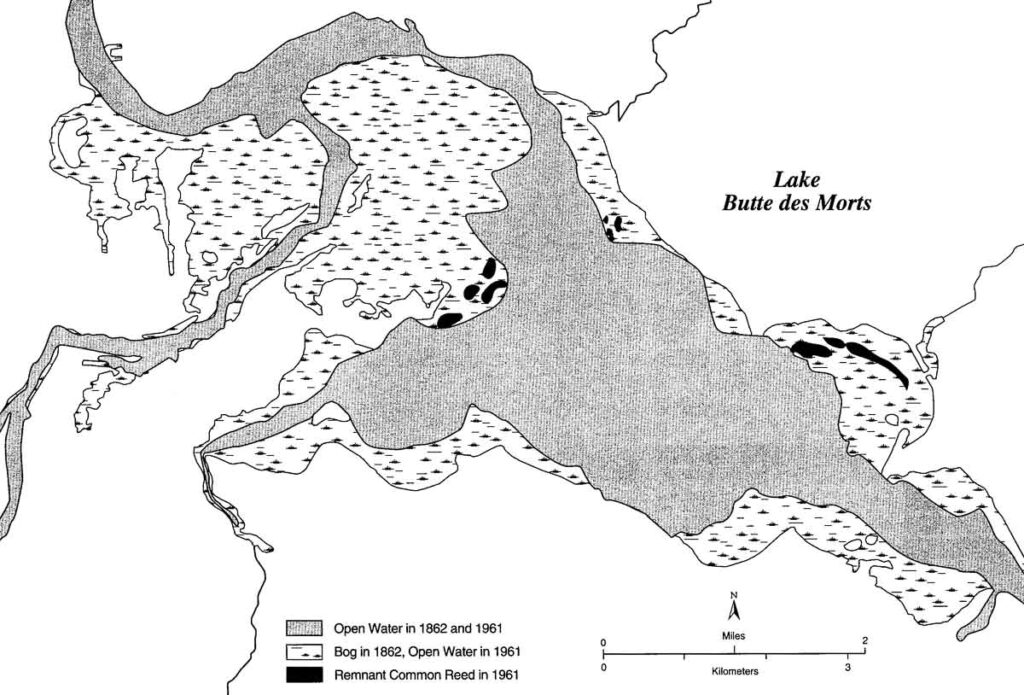
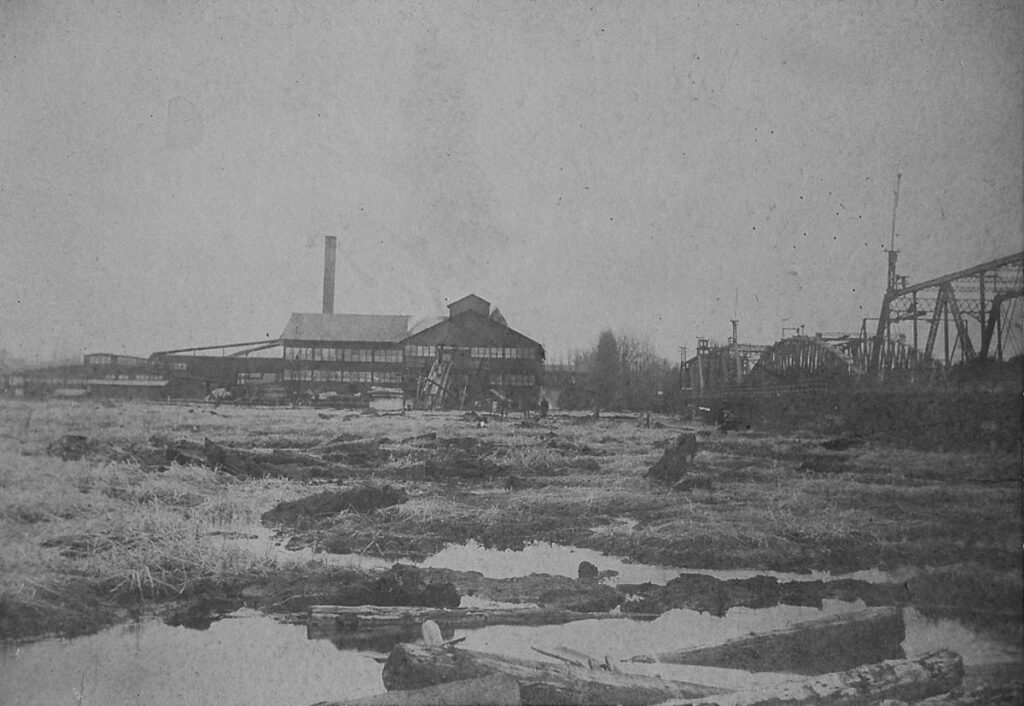
Phase 3 – Seasonal Disruption. This phase results from the disruption of natural seasonal water level cycles, sustained high water even in dry years, and flood events. High and stable water during the growing season disrupts the reproduction of native aquatic and wetland vegetation and promotes the spread of invasive species. These habitat losses are more nuanced than drowning land or the breakup of hundreds of acres of marsh into floating islands. Still, the accumulated effects of 170 years of disruption have a severe negative impact.
The primary way the system continues to lose submergent and emergent vegetation is because of the disruption of natural seasonal water level fluctuations, but also because of murky water that prevents light from reaching the plants below. Fewer plants mean fewer roots to hold in sediment, dampen waves, and take up excess nutrients. This produces murkier water and few plants, creating a negative feedback loop. For these reasons, the Upper Pool Lakes have suffered severe loss of both emergent and submergent vegetation. Vegetation surveys conducted at eight locations in the late 1970s were compared with surveys in 2008 and 2009. The results of this comparison showed a loss of 695 acres of submergent vegetation or an average of 23 acres per year. It is important to stress that only a portion of the lakes were surveyed. In addition to the loss of this excellent fish and wildlife habitat, much of the remaining habitat shifted from a plant community plentiful with species considered to be highly beneficial to wildlife to one less beneficial and more prone to pose a nuisance to human activities.
Table 1. Change in acreage of submergent aquatic macrophytes (visible complex plants and algae) for the Upper Winnebago Pool Lakes from the late 1970’s (Kahl 1993) and a 2008-2009 DNR surveys. The area surveyed only covers eight study areas and not the entirety of each lake. Terrell’s Island restoration area excluded from comparison.
| 1975-1979 Average | 2008-09 | Change | |
| Lake Poygan | 951 | 451 | -53% |
| Lake Butte des Morts | 524 | 360 | -31% |
| Lake Winneconne | 150 | 117 | -22% |
| Total | 1624 | 929 | -43% |
The natural seasonal fluctuations are important not only to plant life cycles, but for fish and wildlife too. Flooded marshes in the spring are important waterfowl feeding places. They are crucial to northern pike who attach their eggs to vertical vegetation. The healthier these marshes are, the healthier the northern pike and other fish. Seasonal changes have resulted in a low muskrat population (described in Winter Level section). Muskrats create or maintain slough and pothole environments by consuming vegetation, lodge construction, and tunneling. Without muskrat activity, many of these habitats, which are important for waterfowl and game fish nurseries, have been overrun by invasive cattail species.

Ironically, many aquatic and wetland plants’ seeds will not germinate, or will fail to grow past the seedling stage if they are covered with water. Under natural water level fluctuations, this occurs in late summer or in drought years. Emergent plants such as bulrushes and common reed (Phragmites australis) require these conditions. In addition to seed production, emergent plants reproduce vegetatively by sending out runners, and spread during the dryer seasons or years with lower water levels.
Winter levels
As shown in fig. 3, winter water levels on drainage lakes and impoundments are naturally the highest in the annual cycle. However, managers of many reservoirs, including the Winnebago System, lower water levels in winter to minimize ice damage to shorelines and prevent spring flooding. Wildlife has evolved to rely on these higher winter levels. Fur-bearing animals such as muskrats, mink, and beavers rely on higher levels to access food and seek protection from predators and harsh winter weather.
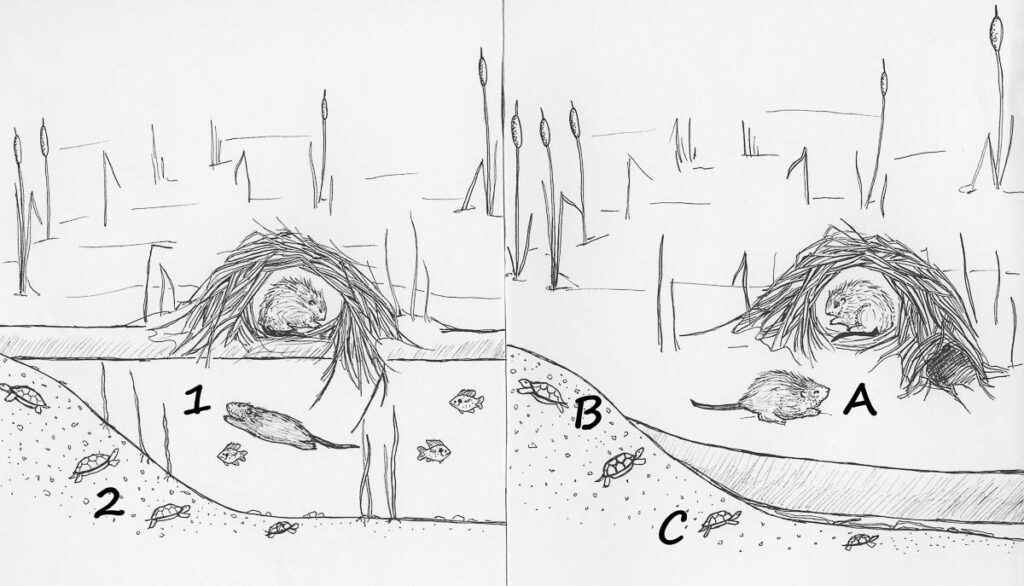
Many amphibians and reptiles hibernate within the sediment of shallow water. If they hibernate in the shallows that are later drawn down, they are exposed to freezing if there is no insulating layer of ice and snow, or possible suffocation if a layer of ice caps the
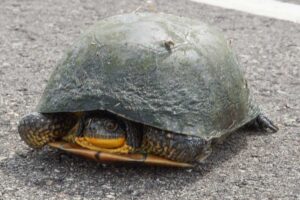
substrate. Turtles are especially vulnerable to these winter problems because of their slow reproduction and already low populations. For example, the long-lived Blanding’s turtle, a state-threatened species found in the system, cannot maintain a population if they experience greater than an annual 7 % mortality of adults or 28% of juveniles. Female Blanding’s turtles do not reach sexual maturity until the age of 18-22 years and only lay 5 to 12 eggs annually.
Effects on Water Quality
Water quality has been adversely affected by the loss of aquatic plants and wetlands. Wetlands are widely known to clear water of nutrients, sediment, and other pollutants before entering surface or ground waters, so much so that artificial wetlands are used as part of municipal and industrial wastewater treatment processes. When wetlands are absent, physically altered, or experience a loss in diversity due to invasive species, their ability to provide these cleaning services are reduced or eliminated.
Aquatic plants increase water clarity and reduce nutrient levels in several ways. Their physical presence in the water acts as a filter. Plants also provide a haven for zooplankton and other feeders of algae. These organisms can remove more algae from the water column. Plants also compete for light with algae and absorb from the water nutrients the algae require to grow. They also prevent solids from getting into the water column in the first place. Their root systems hold in sediment, and their presence dampens waves, which reduces shoreline erosion and the stirring up of sediment. By oxygenating the sediment, they also prevent chemical reactions that release phosphorus.
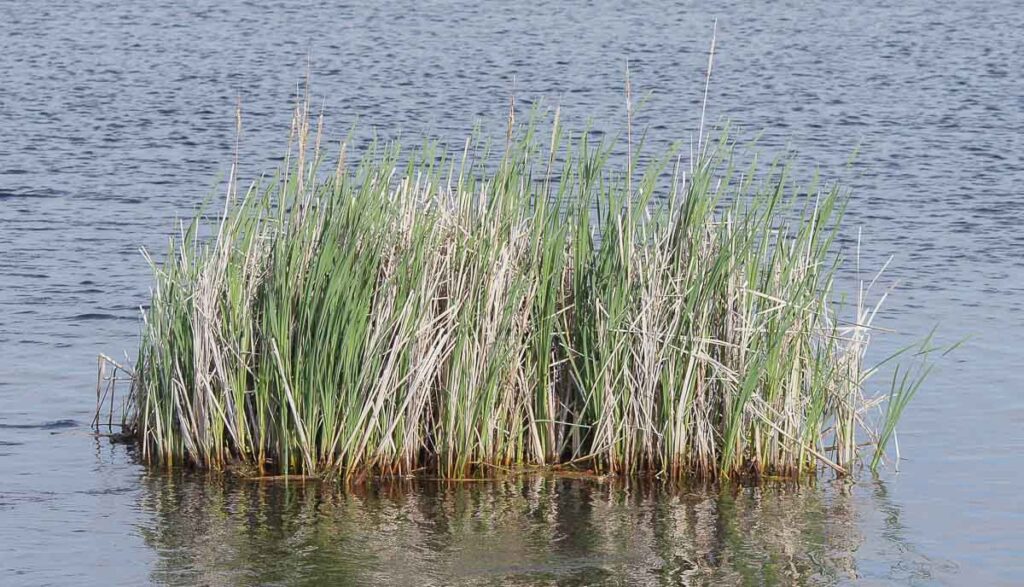
Climate Change
The future effects on climate on the lakes are unknown. Most predictions indicate that weather will become more extreme, with flooding and droughts becoming more commonplace. Periods of heavy flooding have adverse effects on aquatic plants, reduce the depth at which light penetrates, and cause erosion of neighboring wetlands. Wetlands form a sponge that slowly releases water, and must be protected to reduce the effects of flooding on aquatic plants, but also man-made structures, crops etc. A longer, ice-free and warmer growing season could increase the frequency and length of algal blooms and thick growth of aquatic vegetation.
Summary
The Winnebago Pool has seen significant losses since the construction of dams in the 1850s. These losses continue to this day. There is no single cause for this habitat loss, and the degree that artificial water level fluctuation, wave action, algae blooms, increased turbidity, and nutrients each play is unknown. However, artificial water level management is the major driving force that created this situation. Mimicking natural seasonal levels and droughts is an effective way to restore and protect habitat and improve water quality. Proper water level management is not the only answer. Nutrient and sediment management on the landscape must also improve, as well as shoreland management and control of invasive wetland species. Without addressing all these issues, habitat loss and degradation will continue. It is not only the fish and wildlife that need protection, but the economy they fuel and the property values they elevate.
Links and References
USACE Lake Winnebago water levels and river flows
